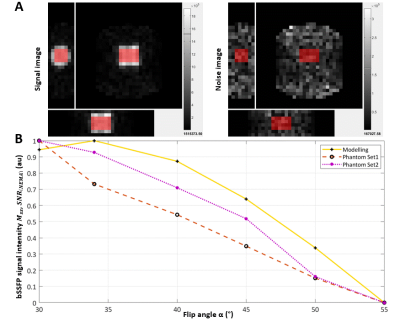Karthik Chary1, Franck Mauconduit2, Fiona Smith1, Marie Chupin3, Emmanuelle Gourieux2,3, Laura Pelizzari4, Karen Kettless5, Kristoffer Brendstrup-Brix6, Eva Mezger7, Daniel Keeser7, Olaf Dietrich8, Tim Wesemann9, Philipp Ritter10, Annett Werner9, Letizia Squarcina11, Paolo Brambilla11,12, Frank Bellivier13, Fawzi Boumezbeur2, David Cousins1,14, and Pete Thelwall1
1Translational and Clinical Research Institute, Newcastle Magnetic Resonance Centre, Newcastle University, Newcastle upon Tyne, United Kingdom, 2NeuroSpin, CEA, CNRS, Paris-Saclay University, Gif-sur-Yvette, France, 3CATI, Institut du Cerveau et de la Moëlle Epinière, Paris, France, 4IRCCS, Fondazione Don Carlo Gnocchi ONLUS, Milan, Italy, 5Siemens Healthcare A/S & Siemens Healthcare GmbH, Copenhagen, Denmark, 6Neurobiology Research Unit (NRU) at Copenhagen University Hospital Rigshospitalet, Copenhagen, Denmark, 7Department of Psychiatry and Psychotherapy, University Hospital, LMU University, Munich, Germany, 8Department of Radiology, University Hospital, LMU Munich, Munich, Germany, 9Institute and Clinic of Diagnostic and Interventional Neuroradiology, University Hospital, Carl Gustav Carus, Dresden, Germany, 10Department of Psychiatry, University Hospital Carl Gustav Carus, Technische Universität Dresden, Dresden, Germany, 11Department of Pathophysiology and Transplantation, University of Milan, Milan, Italy, 12Department of Neurosciences and Mental Health, Fondazione IRCCS Ca' Granda Ospedale Maggiore Policlinico, Milan, Italy, 13INSERM UMRS-1144, AP-HP, Saint-Louis - Lariboisière – F. Widal Hospitals, Paris, France, 14Regional Affective Disorders Service, Cumbria, Northumberland, Tyne and Wear NHS Foundation Trust, Newcastle Upon Tyne, United Kingdom
1Translational and Clinical Research Institute, Newcastle Magnetic Resonance Centre, Newcastle University, Newcastle upon Tyne, United Kingdom, 2NeuroSpin, CEA, CNRS, Paris-Saclay University, Gif-sur-Yvette, France, 3CATI, Institut du Cerveau et de la Moëlle Epinière, Paris, France, 4IRCCS, Fondazione Don Carlo Gnocchi ONLUS, Milan, Italy, 5Siemens Healthcare A/S & Siemens Healthcare GmbH, Copenhagen, Denmark, 6Neurobiology Research Unit (NRU) at Copenhagen University Hospital Rigshospitalet, Copenhagen, Denmark, 7Department of Psychiatry and Psychotherapy, University Hospital, LMU University, Munich, Germany, 8Department of Radiology, University Hospital, LMU Munich, Munich, Germany, 9Institute and Clinic of Diagnostic and Interventional Neuroradiology, University Hospital, Carl Gustav Carus, Dresden, Germany, 10Department of Psychiatry, University Hospital Carl Gustav Carus, Technische Universität Dresden, Dresden, Germany, 11Department of Pathophysiology and Transplantation, University of Milan, Milan, Italy, 12Department of Neurosciences and Mental Health, Fondazione IRCCS Ca' Granda Ospedale Maggiore Policlinico, Milan, Italy, 13INSERM UMRS-1144, AP-HP, Saint-Louis - Lariboisière – F. Widal Hospitals, Paris, France, 14Regional Affective Disorders Service, Cumbria, Northumberland, Tyne and Wear NHS Foundation Trust, Newcastle Upon Tyne, United Kingdom
We demonstrated good agreement between modelling and phantom acquisitions
to maximize 7Li-MRI signal amplitude which showed minimal inter-site
variation in signal-to-noise to facilitate multi-centre studies of lithium
treatment in bipolar disorder.

Figure 2. Modelling vs phantom validation. A) SNR was computed on magnitude images using an identically positioned ROI (red block) on a signal and pure noise image according to the NEMA standard method. Parameters: TR=6.5 ms, TE=3.0 ms, NSA=217, recon matrix=32x32x7, recon voxel size=21.88x21.88x25 mm3, acquisition time=5 min. The Philips bSFFP sequence incorporated an elliptical shutter. B) Slight variation in the profile of the bSSFP signal amplitude versus flip angle was observed when comparing the theoretical modelling to the phantom tests.

Figure 3. Pilot in vivo acquisitions. T1w images displayed for anatomical reference (A-C),
7Li-MRI images showing the 7Li distribution in the brain (D-F).
The 7Li-MRI in vivo images acquired from three different test
patients showed signal variations across multiple sites. The Philips data was
interpolated to 21.88x21.88x25 mm3.
